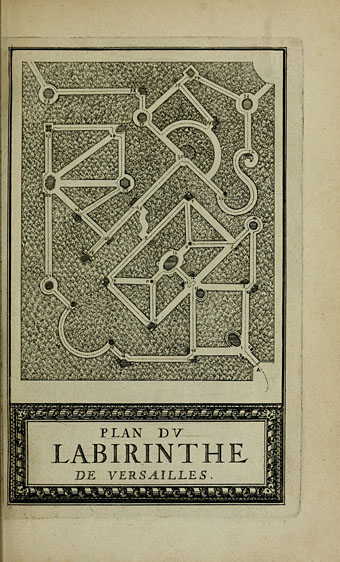
I ought to have mentioned this last week since a plan of the lost labyrinth of Versailles appears in the William Henry Matthews book. The labyrinth was completed for Louis XIV in 1677, and is unusual for being a series of paths without a central focus, and also a very ornamental affair containing thirty-nine fountains with accompanying statuary which depicted the animals from Aesop’s fables. The latter were a suggestion of Charles Perrault from whose Labyrinte de Versailles (1677) these illustrations are taken. The etchings are by Sébastian Le Clerc whose map shows the route that visitors would have taken in order to visit each fountain in turn. The book may be browsed here or downloaded here.
The labyrinth was removed in 1778 but Wikipedia has a page with more information including some colour prints of the fountains, and also an English list of the fables depicted.
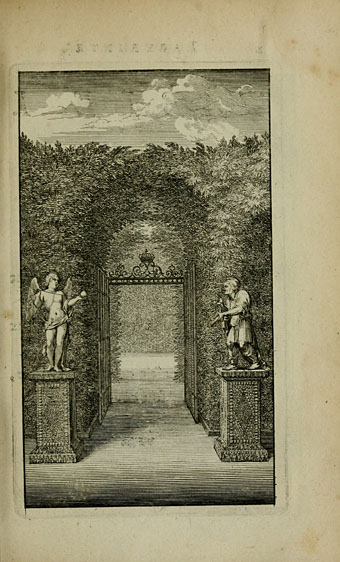
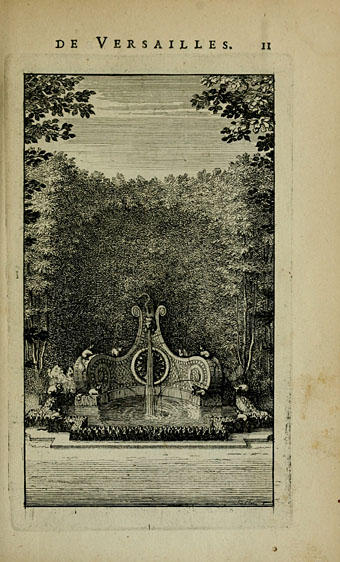
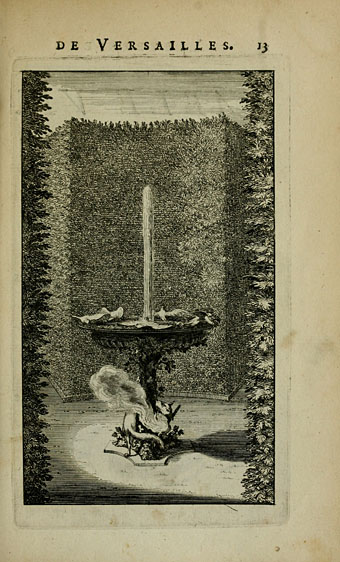
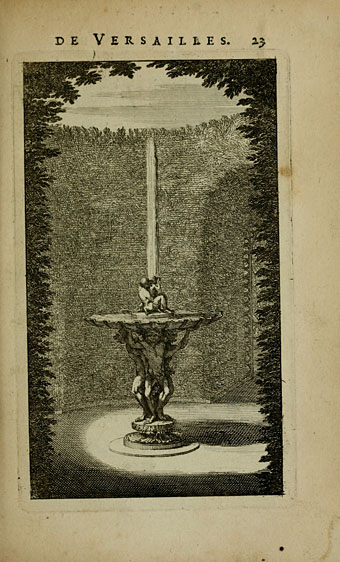
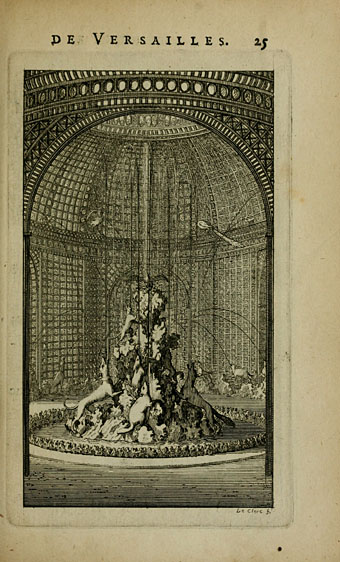
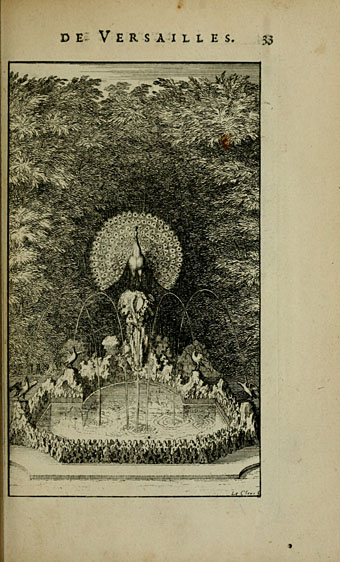
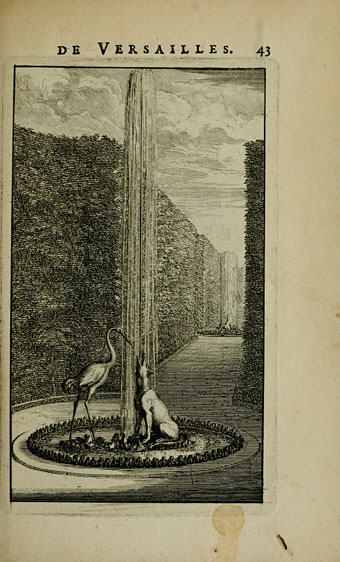
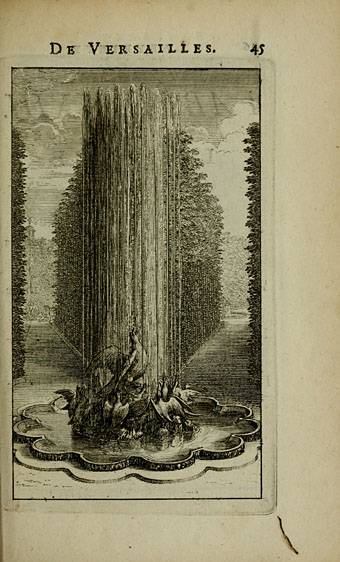
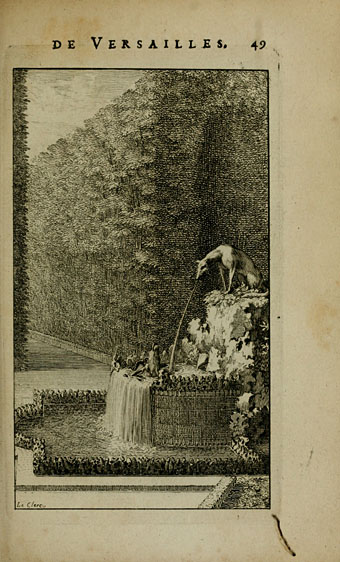
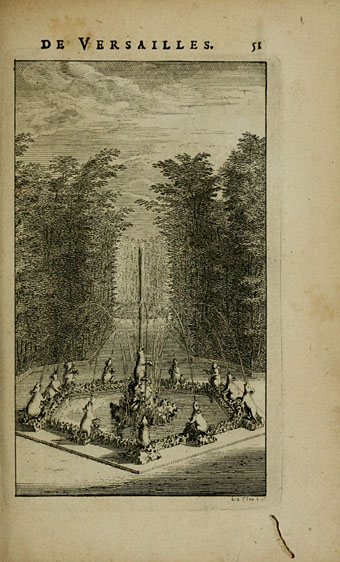
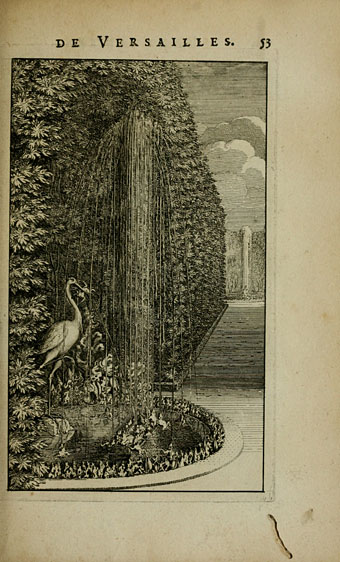
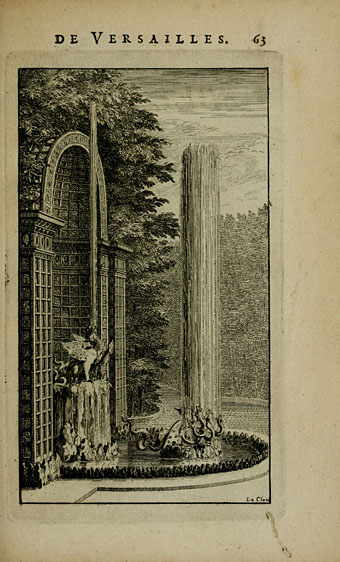
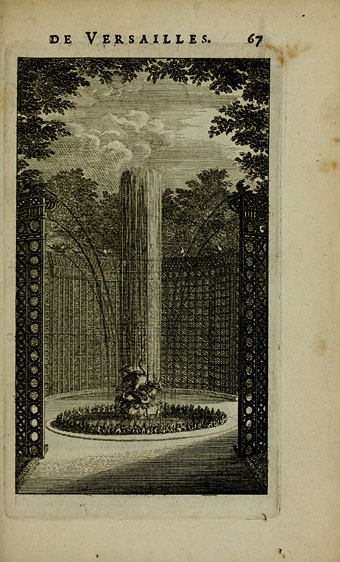
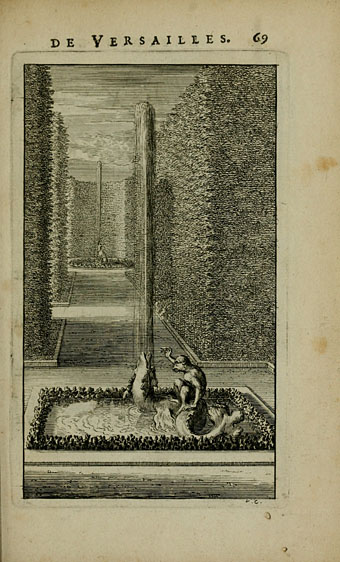
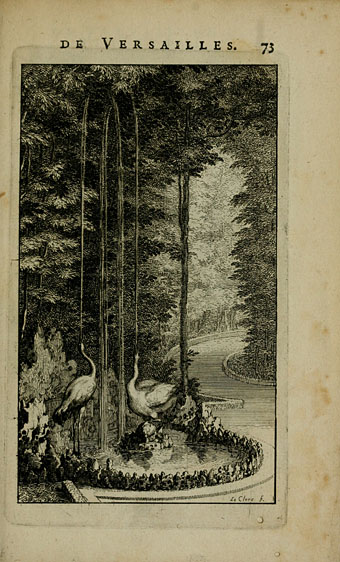
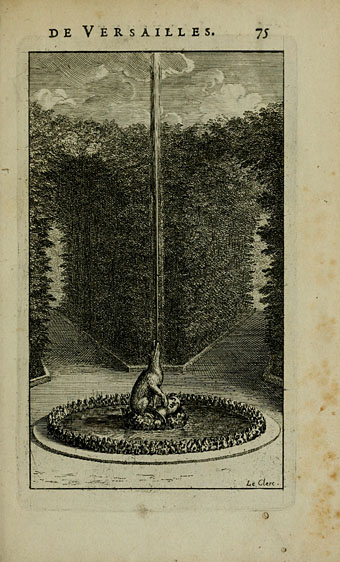
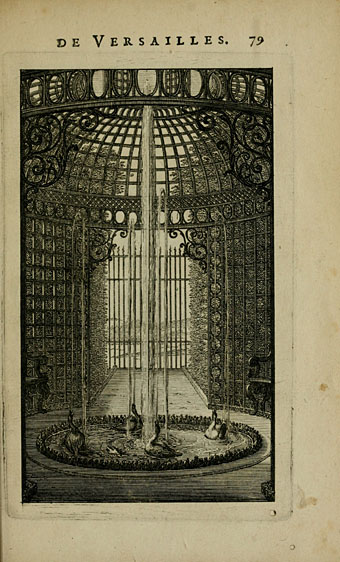
Elsewhere on { feuilleton }
• The etching and engraving archive
Previously on { feuilleton }
• Maze and labyrinth panoramas
• Mazes and labyrinths
• Labyrinths
• Jeppe Hein’s mirror labyrinth

One can only imagine wandering in such a foley. Beautiful designs! Alas, now, one can also only imagine walking through the remaining parts of the gardens to the sounds of falling water and birdsong. Versailles now pipes recorded Baroque music throughout the gardens almost constantly. This is oddly in keeping with the building’s jaw dropping vulgarity. Something which, despite French protestations to the contrary, has made it a perfect backdrop for installations of work by Koons and Murakami.
Hi Paul. I didn’t feel tempted to visit Versailles when I was over there, even without it being a terrible tourist trap. I’m not averse to the vulgarity–I wouldn’t mind visiting Ludwig’s palaces partly for that reason–but Versailles has never seemed all that interesting. It seems now like the Mona Lisa (a painting I also wasn’t interested in seeing), famous for being famous rather than for its intrinsic qualities.
Thanks for these and previous labyrinth images, they’re delightful. From your comments about Versailles it sounds like I should stick with the wonderful photographs made by Atget.
Yes, Atget is a better bet for multiple reasons! Some friends visited Versailles in the middle of summer and described it as a hellish experience.
For some reason I’m reminded of the lines by TG – This is the world now Move a fin and the world turns Sit in a chair and pictures change – I haven’t seen much of the world, but most of what I have, probably wasn’t worth the trouble… I’ve found most things look just as good or better in reproduction; especially with all the resources available over the internet – why travel, why move the tired old flesh through all the familiar passages when the labyrinth of mind works just as well and in the end what are we left with but images, smells, rude waiters, wasted sounds – I’d rather exercise my fins…
John, have you come across Jurgis Baltrušaitis’ essays, “Aberrations” (subtitled “Depraved Perspectives”)? One of the essays addressed the Versailles-era enthusiasm for Extreme Gardening.
Lavishly illustrated with visual raw material — it would be right down your street, or your landscape-garden vista as the case may be.
No, not heard of those. I do have a book on follies, however, some of which were an offshoot of landscape gardening when a fake ruin or piece of exotica was required. It’s that side of gardening culture that’s always interested me.
Now you have competition form John Ptak:
http://longstreet.typepad.com/thesciencebookstore/2013/02/the-mathematical-garden-alexander-pope-and-found-geoemtries.html
Nice, thanks. Rambling walks appeal to some creative minds so it’s not surprising to find a poet with a labyrinthine garden.
I also noticed this post at the bottom of the page which uses an image I created:
http://longstreet.typepad.com/thesciencebookstore/2011/04/strange-things-in-the-sky-the-renaissance.html
The first Dante map shown there has a frame I added for a book design. I posted it here in 2008:
http://www.johncoulthart.com/feuilleton/2008/08/14/maps-of-the-inferno/